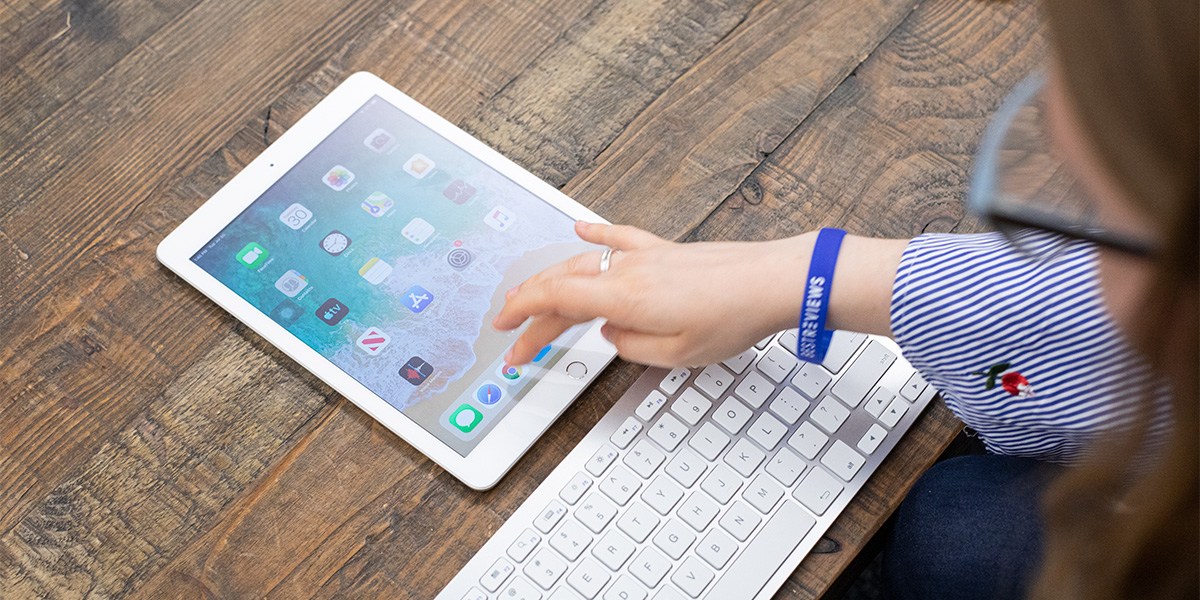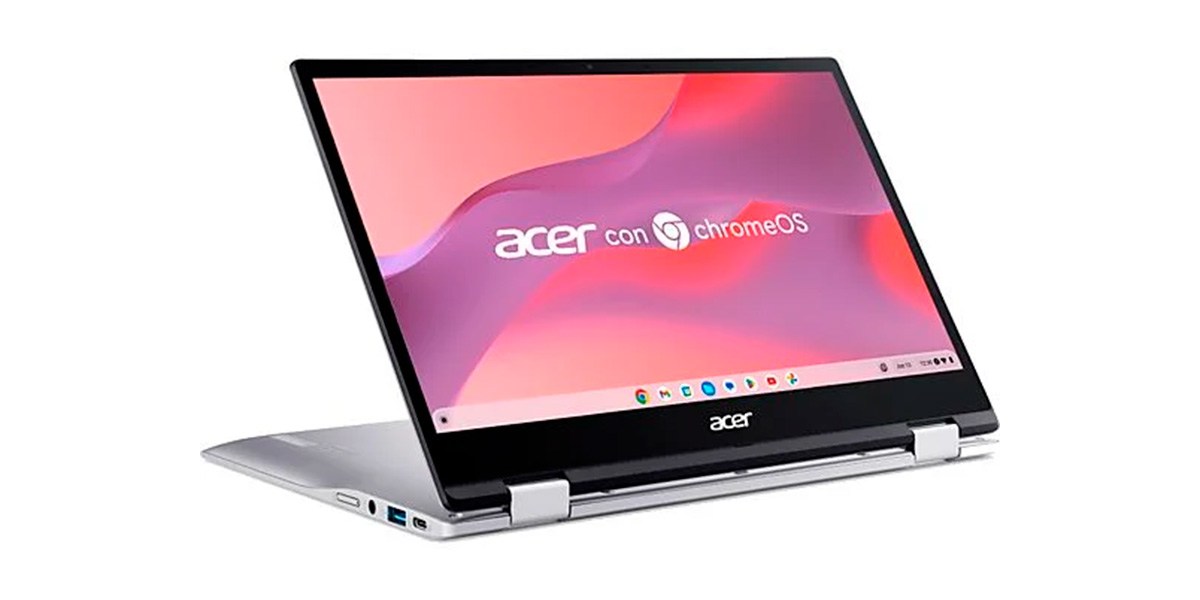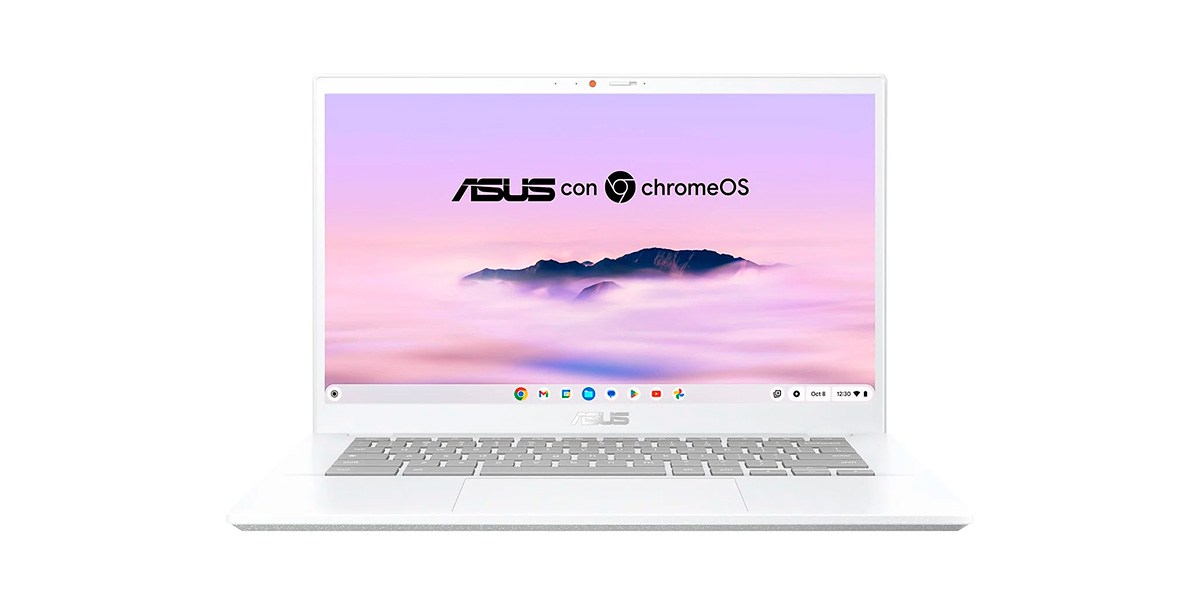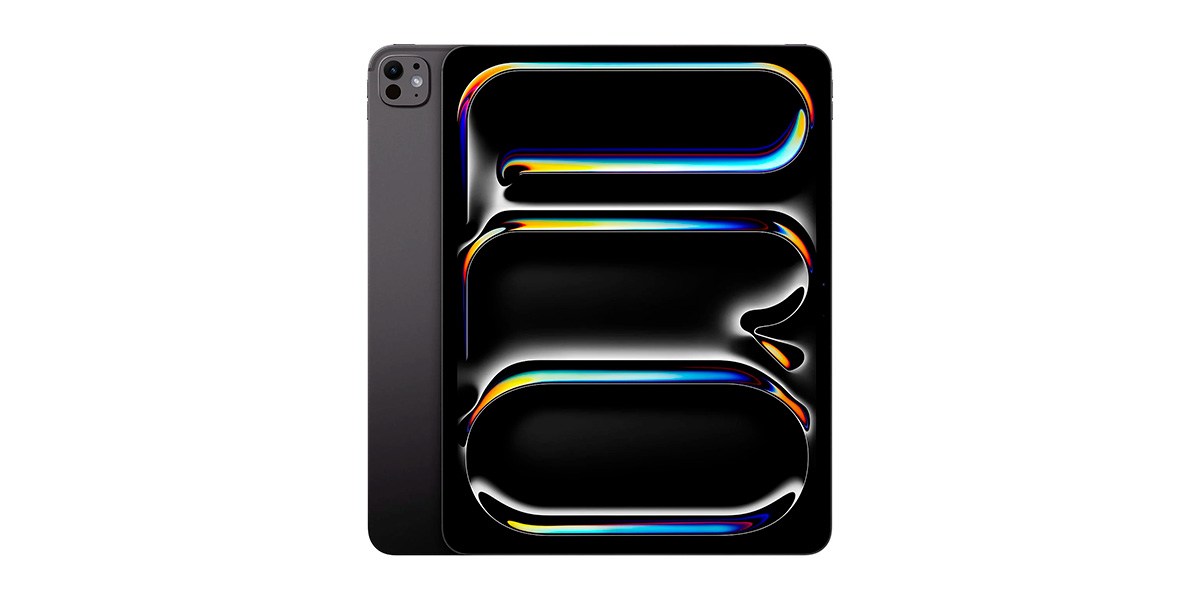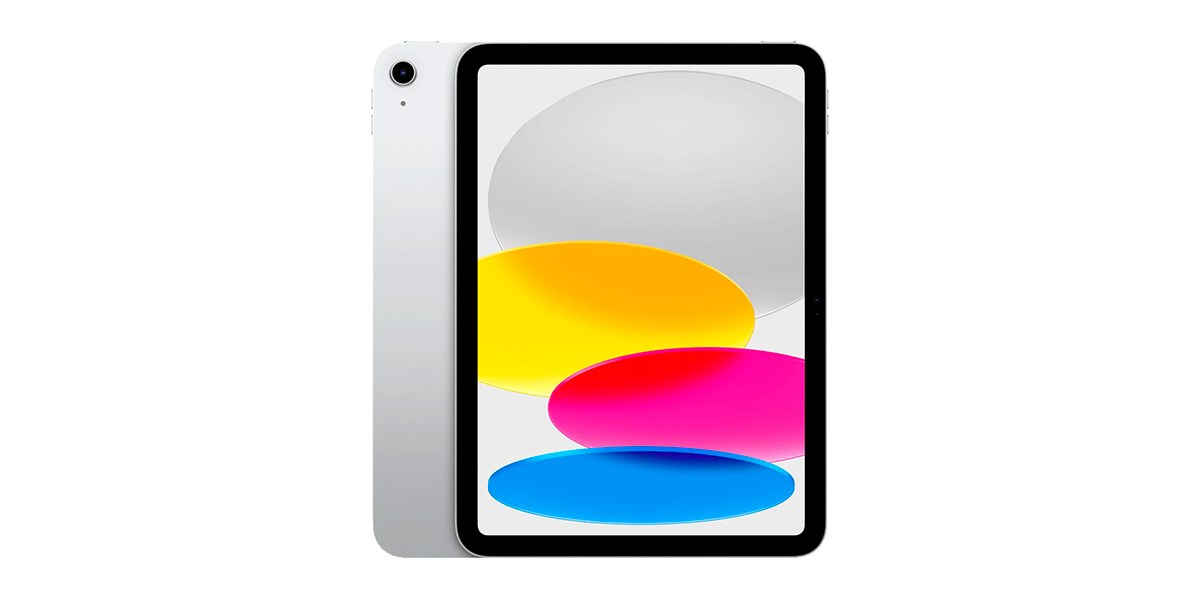These laptop replacements are bigger, brighter and more powerful than ever
Chromebooks and iPads have come a long way. If you’re trying to decide between Chromebooks versus iPads, however, their pros and cons might not be clear. How are they different? How are they similar? How do they compare to laptops and desktops?
Chromebooks were introduced as low-cost, low-powered alternatives to mainstream laptops, while iPads jumpstarted the entire tablet format for reading and consuming media. From those humble-ish beginnings, they’ve become popular machines, with some Chromebooks capable of being most people’s everyday machines, and the top iPads being all-in-one media production workstations.
The BestReviews Testing Lab has tested numerous Chromebooks and iPads over the years. We’ve picked two models of each to compare what Chromebooks do well versus iPads, and vice versa. Both Chromebooks and iPads can replace your main machine, but iPads are better at creating and consuming media. If you need to do productivity tasks, especially anything involving typing, a Chromebook is the better choice.
Chromebook vs. iPad: What they do well
Chromebooks are often more affordable and durable than iPads, while iPads are lighter and have sharper, brighter screens.
If you don’t need to use full-scale standalone apps or prioritize portability and value, a Chromebook or iPad may be a better fit than a mainstream laptop or desktop.
Chromebook benefits
- Price: Chromebooks are generally lower priced and more affordable compared to full-powered laptops or iPads.
- Durable: Chromebooks can be more durable than iPads because their form factor and design is less vulnerable to impacts and less costly to replace.
- Keyboard: Chromebooks come with keyboards, making it easier to input large amounts of text compared to using a tablet.
iPad benefits
- Screen: iPads generally have brighter, sharper and more colorful screens than Chromebooks, making them better suited for watching videos, video editing, graphic design, illustration, art and even reading and browsing.
- Portability: As tablets, iPads are thinner and lighter than even flip-style convertible Chromebooks.
- OS and apps: iPadOS is a comprehensive operating system with thousands of third-party apps compared to ChromeOS.
What they could improve
While Chromebooks and iPads have become more and more functional over the years, they still have some drawbacks compared to mainstream laptops and to each other.
Chromebook drawbacks
- Screen: While some high-end Chromebooks have sharp, vivid screens, Chromebooks, in general, are less suited for watching or creating video and are likely to have lower-resolution screens with less color accuracy than iPads.
- Portability: Chromebooks are as portable as any laptop, but even models with a tablet mode are heavier and thicker than iPads.
- Apps: Since they only run ChromeOS, Chromebooks are limited to web apps run through the Chrome browser and some Android apps.
iPad drawbacks
- Keyboard: iPads lack a physical keyboard, which must be purchased separately. The iPad’s onscreen keyboard works for short emails or notes, but longer documents or input becomes impractical.
- Price: Except for the basic iPad, iPad models generally cost more than Chromebooks, and the most powerful iPad Pros cost more than many regular laptops and desktops.
- Multitasking: While iPadOS has features that help users work on more than one app at a time, it’s still somewhat awkward to do more than one thing at a time on an iPad.
Top Chromebook models
Chromebooks might be known as limited devices, but that’s not the whole picture. Two models we tested, the Acer Chromebook Spin 714 and the ASUS Chromebook CX34, are Chromebooks that could be considered primary machines.
Acer Chromebook Spin 714
The Acer Chromebook Spin 714 can be used in laptop, tablet, stand and tent mode.
Product specifications
Battery life: 12 hr (tested) | Processor: Intel EVO Core i3, i5 or i7 | Memory: 8GB or 16GB | Storage: 256GB | Screen size: 14″
The Acer Chromebook Spin 714 is a higher-end Chromebook that converts from a laptop to a tablet with tent mode and stand mode in between, giving it extra versatility. We were impressed by its performance during our testing, noting its full-fledged Intel i-series processors and its solid memory and storage offerings.
We were particularly impressed by the clarity and quality of its 14-inch 1920-by-1200-pixel screen, noting the smoothness of streaming video and the accuracy of its colors. Its upward-firing speakers were a little disappointing in laptop mode but sounded better in tablet and stand mode. It had excellent 12-hour battery life during testing and looked and felt sleeker than other Chromebooks we’ve seen. For anyone who can get their work done using only web apps, it could be a primary machine.
ASUS Chromebook Plus CX34
The ASUS Chromebook Plus CX34 is a solid, mid-range machine that’s ideal for students.
Product specifications
Battery life: 8 hr (tested) | Processor: Intel Core i3 or i5 | Memory: 8GB or 16GB | Storage: 126GB or 256GB | Screen size: 14″
A midlevel Chromebook, the ASUS Chromebook Plus CX34 is a solid if basic machine that we think would be good for schoolwork, home use and as a lightweight extra machine. We tested a model with a genuine Intel i-series processor and liked its available specs for memory and storage. In our testing, we particularly noted its large and comfortable built-in keyboard, which we liked better than that of the more expensive Acer.
Its 1980-by-1080 14 inch screen was somewhat disappointing, with middling brightness and color that had a yellow tinge to its reds and yellows. We also wished it had more vertical space to offer for productivity tasks, although its 16:10 aspect ratio was solid for streaming video. We also liked its surprisingly good speakers.
Top iPad models
iPad models are refreshed yearly and keep pushing the boundaries of what a tablet can do. The 13-inch iPad Pro with the M4 processor is more powerful than many full-sized computers, while the 10th-generation iPad is a solid successor to the original.
Apple iPad Pro 13-in. (M4)
iPads have bright, vivid screens but don’t come with keyboards or styluses. The iPad Pro is a portable graphics and media powerhouse.
Product specifications
Battery life: 10 hr | Display size: 13″ | Processor: Apple M4 | Storage: 256GB or 512GB, 1TB or 2TB
The 13-inch iPad Pro with M4 processor is the top-of-the-line iPad, with a powerful Apple M4 processor that’s faster than the processors used in most of Apple’s Macs and MacBooks. It’s bigger but thinner than the previous iPad, with a 13-inch OLED screen that gets as bright as 1,000 nits in regular usage or 1,600 nits with HDR, and wide P3 support for color accuracy in graphics and design.
Its single USB-C port supports Thunderbolt 4 for pro-grade data transfer speeds. It boasts four speakers and claims studio-grade mics for recording audio, as well as 12 MP front and rear cameras. There are options for a textured surface on higher-capacity models for more natural drawing and art, and hardware accelerations for 8K and professional video creation and editing. It’s a portable graphics and media powerhouse.
Apple iPad (10th Generation)
iPads are ideal for watching videos, video editing, graphic design, illustration, art and even reading and browsing.
Product specifications
Battery life: 10 hr | Display size: 10.9″ | Processor: Apple A14 Bionic | Storage: 64GB or 256GB
The 10th-generation Apple iPad comes with the same A14 Bionic processor as the iPhone 12 series. It drops a headphone jack for a single USB-C port to connect to power or accessories.
Its nearly 11-inch screen offers up to 500 nits of brightness and sRGB color, and it’s coated with a fingerprint-resistant coating, but it lacks the anti-reflective properties of higher-end iPads. There are only two storage sizes, 64 GB or 256 GB, which are appropriate for using it as a secondary device to go with your computer rather than as a replacement. It has 12MP cameras both in front and in back, and the front camera supports Apple’s Center Stage feature for keeping subjects centered during video calls. It’s less than 10 inches long, just over 7 inches wide and 7 millimeters thick, weighing barely over 1 pound.
ASUS Chromebook Plus CX34 vs. Apple iPad (10th Generation)
As a mid-level Chromebook, the ASUS Chromebook Plus CX34 is a little underpowered compared to the entry-level 10th-generation Apple iPad. The iPad has a sharper, brighter, more accurate screen, better speakers and dual cameras, and it’s thinner and lighter. It’s also less expensive than the Chromebook Plus, unless you opt for a lower-powered processor. On the other hand, the Chromebook had a comfortable keyboard to type on, and felt less fragile than the iPad. The 10th-generation iPad has a longer battery life than the Chromebook Plus, but the difference wouldn’t be drastic in normal use.
Acer Chromebook Spin 714 vs. Apple iPad Pro 13-Inch (M4)
The higher-end Acer Chromebook Spin 714 is less expensive and more practical than the top-of-the-line 14-inch iPad Pro with M4 processor. The iPad Pro is a powerhouse tablet with a super-bright, color-accurate screen, impressive speakers, dual cameras and top-class processor, but it lacks a physical keyboard and can’t stand up on its own without a separate stand or case. The Acer Chromebook Spin has four usage modes, including laptop and tablet, with a comfortable physical keyboard as well as a touch screen. Its speakers and single camera are inferior to the iPad Pro’s, and its screen, while bright and accurate, is much less bright and sharp than the iPad Pro’s, but it’s still a capable and useful computer at a more affordable price.
Chromebook vs. iPad functionality
Chromebooks and iPads differ in their functionality and how they help users accomplish their tasks.
Keyboard
The most obvious difference between Chromebooks and iPads is that Chromebooks come with keyboards, while iPads don’t.
Chromebooks come with a built-in keyboard. This makes them good for tasks that require a lot of typing, such as writing essays or reports for school, email and memos for work, coding, blogging and more. The Chromebooks we tested all have keyboards, even the ones that can convert form factors into a tablet or tent display.
iPads don’t come with physical keyboards. Their primary keyboard is virtual, appearing on the screen and changing depending on the iPad’s position or the app being used. This virtual keyboard is more useful than it looks and can be used to input a surprising amount of text, but it’s no replacement for the comfort and accuracy of a physical keyboard. With an iPad, you have to buy a physical keyboard separately.
Apps and operating system
Chromebooks run ChromeOS, which is essentially the Google Chrome browser on a Linux distribution. Everything you do on a Chromebook is done through a Chrome browser window, even playing media or gaming. While many popular apps, such as Microsoft Office, Spotify, Netflix and Photoshop, have web app versions that can be run in a ChromeOS window, they may lack the features or speed of a non-web app, and some apps don’t exist as web app versions at all. Luckily, many Android apps can run on ChromeOS.
iPadOS, the iPad operating system, is a more complex OS with thousands of apps available for it. Many of these apps, downloaded and installed on an iPad, can run offline, and offer more features or more power than web apps.
Being web-based, Chromebooks rely on an active Internet connection to work at their best. You can work on some apps, like Google Docs, offline, but generally you need to be connected for a Chromebook to work best. iPads, on the other hand, are more usable than Chromebooks when not connected to the Internet.
Display
iPads overall have better displays compared to Chromebooks. The base model 10th-generation iPad has a high-resolution 2360‑by‑1640-pixel display with up to 500 nits of brightness and sRGB color, making it both bright and accurate. By comparison, the ASUS Chromebook Plus CX34 offers up to 250 nits of brightness and a 1920 x 1080 resolution, making it dimmer and not as sharp. We noted a lack of accuracy in its color reproduction as well.
The Acer Chromebook Spin 714, a higher-end Chromebook, has a brighter 340-nit screen and 1920 x 1200 resolution with sRGB color, and we found it sharp and accurate. Still, it’s not in the same league as the top-line 13-inch iPad Pro’s 2752-by-2064 resolution, brightness from 1000 to 1600 nits and wide gamut P3 color.
Other hardware
Processor
Chromebooks and iPads were once considered underpowered compared to mainstream laptops, but that’s not true anymore. The ASUS and Acer Chromebooks we tested both use Intel i-series processors, just like mainstream Windows laptops. Other Chromebooks may use lower-powered Intel Celeron chips or alternatives from AMD.
iPads use Apple processors shared by iPhones or Macs. The 10th-generation iPad runs on the same A14 processor as the iPhone 12 series, while the 13-inch iPad Pro’s M4 processor is the next generation of the M-series processors used in Mac computers.
Power
The Chromebooks we tested and the iPads we’ve chosen match up similarly when it comes to battery life. The ASUS Chromebook Plus CX34 lasted for eight hours of light use and six hours, 20 minutes of watching video, while the Acer Chromebook Spin 314 gave us more than 12 hours of mixed use. Both the 10th-generation iPad and the 13-inch iPad Pro with M4 have advertised battery lives of 10 hours of web surfing or streaming video.
Speakers, mics and cameras
iPads have better speakers, cameras and microphones than Chromebooks in general. The 10th-generation iPad has stereo speakers on either side when in landscape orientation, while the 13-inch iPad Pro with M4 has four speakers and what Apple claims are studio-quality microphones. Both models have front and rear 12MP cameras for shooting photos, video or videoconferencing.
By comparison, both Chromebooks we tested have only one camera designed for videoconferencing or camming; the ASUS has a plain 720-pixel front camera and the Acer features a 2K front camera. The ASUS Chromebook Plus CX34’s speakers were a pleasant surprise to us, but the ones of the higher-end Acer were somewhat disappointing.
Form factor
iPads have just one form factor: the tablet. Cases, stands, keyboards and other accessories can be added to them — but all cost extra. An iPad without a case or stand is held in either landscape or portrait orientation or laid flat on a surface.
Chromebooks come as either laptops or as convertibles. This makes Chromebooks more versatile than iPads when it comes to positioning. Convertible Chromebooks like the Acer Chromebook Spin 714 can work in a normal laptop mode, or as a tablet, or in tent mode, or in stand mode.
Durability
iPads are made of aluminum and glass. This makes them strong, thin and light, but also fragile; you wouldn’t want to drop an iPad onto a hard surface. Chromebooks can be more durable, even ones made mostly of plastic, and stand up to rough usage better than iPads. Both the Chromebooks we’ve mentioned here, the Acer and the ASUS, boast of meeting military-grade specifications for durability.
Ports and expansion
Chromebooks have more ports than iPads. Our tested Chromebooks have two USB-C ports, one or two USB 3.0 ports, headphone jacks and HDMI ports. The last iPad with a headphone jack was discontinued in 2024, and all iPads now have only a single USB-C port for charging or accessories.
Pricing
Chromebooks generally cost less than iPads, but the lowest-cost iPad is priced similarly to budget Chromebooks. The 10th-generation iPad costs $349 and is widely available from Amazon, Best Buy and other retailers as well as the Apple Store. The mid-tier ASUS Chromebook CX34 with an Intel processor retails for $559 and can be found at Best Buy.
The Acer Chromebook Spin 714 starts at $699 and can cost as much as $1,449.99 for a model with the highest specs. It’s available from Best Buy and directly from Acer. The 13-inch iPad Pro with M4 processor starts at $1,299 and can cost as much as $2,500; it’s available on Amazon and elsewhere. .
Bottom line
Chromebooks and iPads have come a long way from the low-powered laptop alternatives of yesteryear. With bright screens, durable builds and higher-powered processors, Chromebooks are limited only by the capabilities of ChromeOS, while iPads now pack processing power to put desktop and laptop Macs to shame. Still, with their lower prices and built-in keyboards, Chromebooks remain more practical than iPads for school or work, while iPads are better for media, gaming and reading. If you don’t need apps that don’t work on Chrome, a Chromebook may be all you need.
Prices listed reflect time and date of publication and are subject to change.
Check out our Daily Deals for the best products at the best prices and sign up here to receive the BestReviews weekly newsletter full of shopping inspo and sales.
Copyright 2024 BestReviews, a Nexstar company. All rights reserved.


